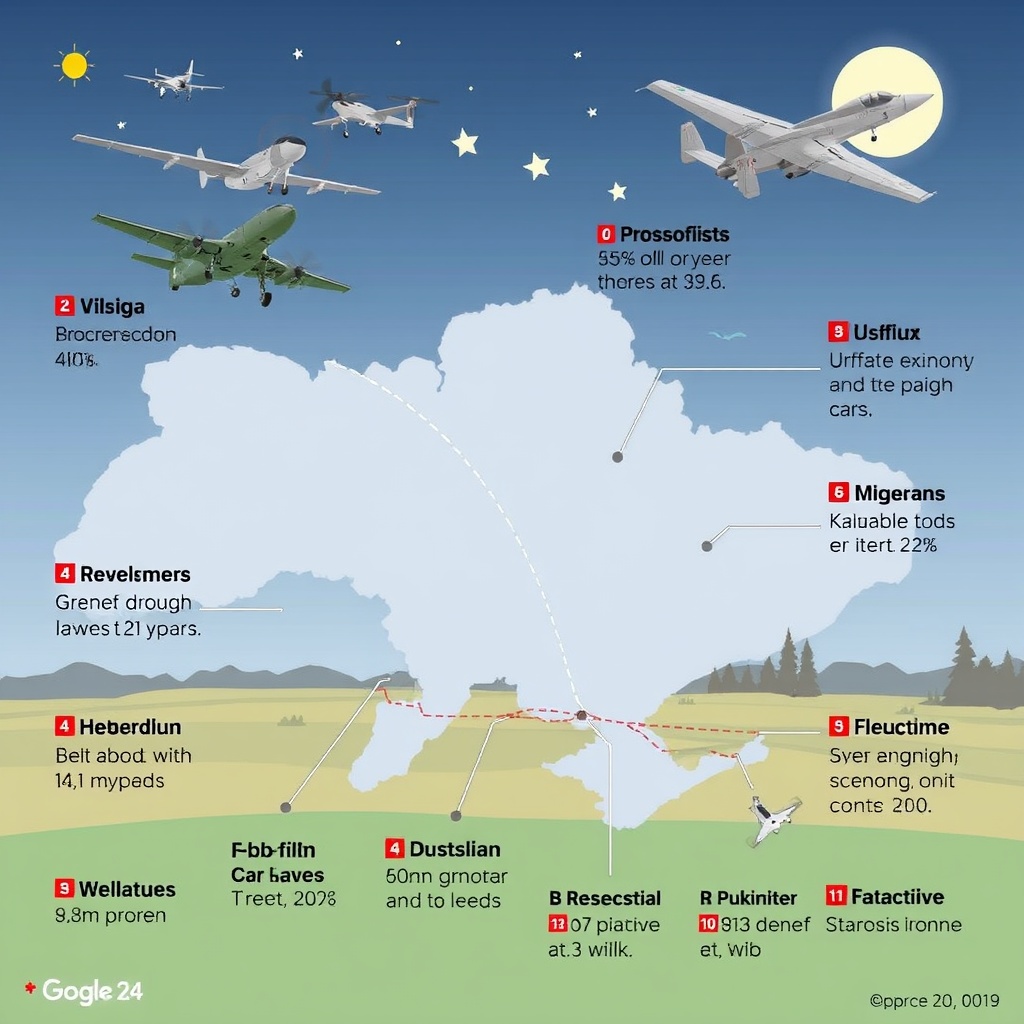Introduction
The ongoing conflict between Russia and Ukraine has seen a significant escalation in recent times, with Russia launching a record-breaking aerial barrage on Ukrainian territory. According to reports from Kyiv's air force, a staggering 479 drones were fired at Ukraine overnight, marking the largest such attack to date. This development comes as Moscow continues to reject diplomatic efforts to resolve the conflict, opting instead for a path of increased aggression. In this article, we will delve into the details of this recent attack, explore the implications of Russia's strategy, and examine the potential consequences for Ukraine and the global community.
The Drone Attack: A New Level of Aggression
The use of drones in modern warfare is not a new phenomenon, but the scale of the recent attack on Ukraine is unprecedented. The 479 drones fired by Russia represent a significant escalation in the conflict, and the sheer number of unmanned aerial vehicles (UAVs) used in the attack has raised concerns about the potential for similar incidents in the future. The drones, likely of the Iranian-made Shahed-136 variety, are known for their ability to evade air defense systems and cause significant damage to infrastructure and civilian populations.
The attack, which was reportedly launched from Russian territory, targeted various locations across Ukraine, including major cities and critical infrastructure. The Ukrainian air force, which has been working to bolster its air defense capabilities, was able to intercept and destroy a significant number of the drones, but the sheer volume of the attack still managed to overwhelm the country's defenses. The incident has highlighted the need for Ukraine to continue upgrading its air defense systems, as well as the importance of international support in providing the necessary resources and equipment to counter such attacks.
Russia's Strategy: A Shift Towards Asymmetric Warfare
The recent drone attack on Ukraine is part of a larger shift in Russia's military strategy, which has seen a growing emphasis on asymmetric warfare. By using drones and other unconventional tactics, Russia aims to exploit the weaknesses of Ukraine's military and create an environment of uncertainty and fear. This approach, which has been employed by various nations and non-state actors in recent years, allows Russia to project power and achieve its objectives without resorting to traditional military means.
The use of drones, in particular, offers Russia a number of advantages, including the ability to attack targets without risking the lives of its own pilots. Additionally, drones can be used to gather intelligence, conduct reconnaissance, and disrupt enemy communications, making them a valuable asset in modern warfare. However, the deployment of drones on such a large scale also raises concerns about the potential for civilian casualties and the impact on non-combatants.
International Implications: A Global Response
The recent drone attack on Ukraine has significant implications for the international community, and the response from global leaders will be closely watched in the coming days. The United States, European Union, and other nations have condemned the attack, with many calling for increased sanctions and diplomatic pressure on Russia to cease its aggressive actions. The incident has also highlighted the need for greater cooperation and coordination between nations to counter the threat posed by drones and other unconventional weapons.
The use of Iranian-made drones by Russia has also raised concerns about the potential for similar attacks in other regions, particularly in the Middle East. The proliferation of drones and other advanced technologies has created a new landscape of threats, and the international community must work together to develop effective countermeasures and strategies to mitigate these risks.
Conclusion
The recent drone attack on Ukraine marks a significant escalation in the conflict between Russia and Ukraine, and the international community must take immediate action to address the situation. The use of drones on such a large scale raises concerns about the potential for civilian casualties, the impact on non-combatants, and the implications for global security. As the situation continues to unfold, it is essential that nations work together to develop effective countermeasures and strategies to mitigate the risks posed by drones and other unconventional weapons.
The incident also highlights the need for continued support for Ukraine, including the provision of air defense systems and other military equipment. The international community must also work to pressure Russia to cease its aggressive actions and engage in diplomatic efforts to resolve the conflict. Ultimately, the resolution of the conflict will require a comprehensive and sustained effort from the international community, and it is essential that nations work together to promote peace, stability, and security in the region.
In the coming days and weeks, the world will be watching closely as the situation in Ukraine continues to unfold. The response from global leaders, the actions of Russia and Ukraine, and the impact on the international community will all be critical factors in determining the course of the conflict. As the world navigates this complex and rapidly evolving situation, one thing is clear: the use of drones and other unconventional weapons has changed the face of modern warfare, and the international community must adapt and respond accordingly.


Leave a comment